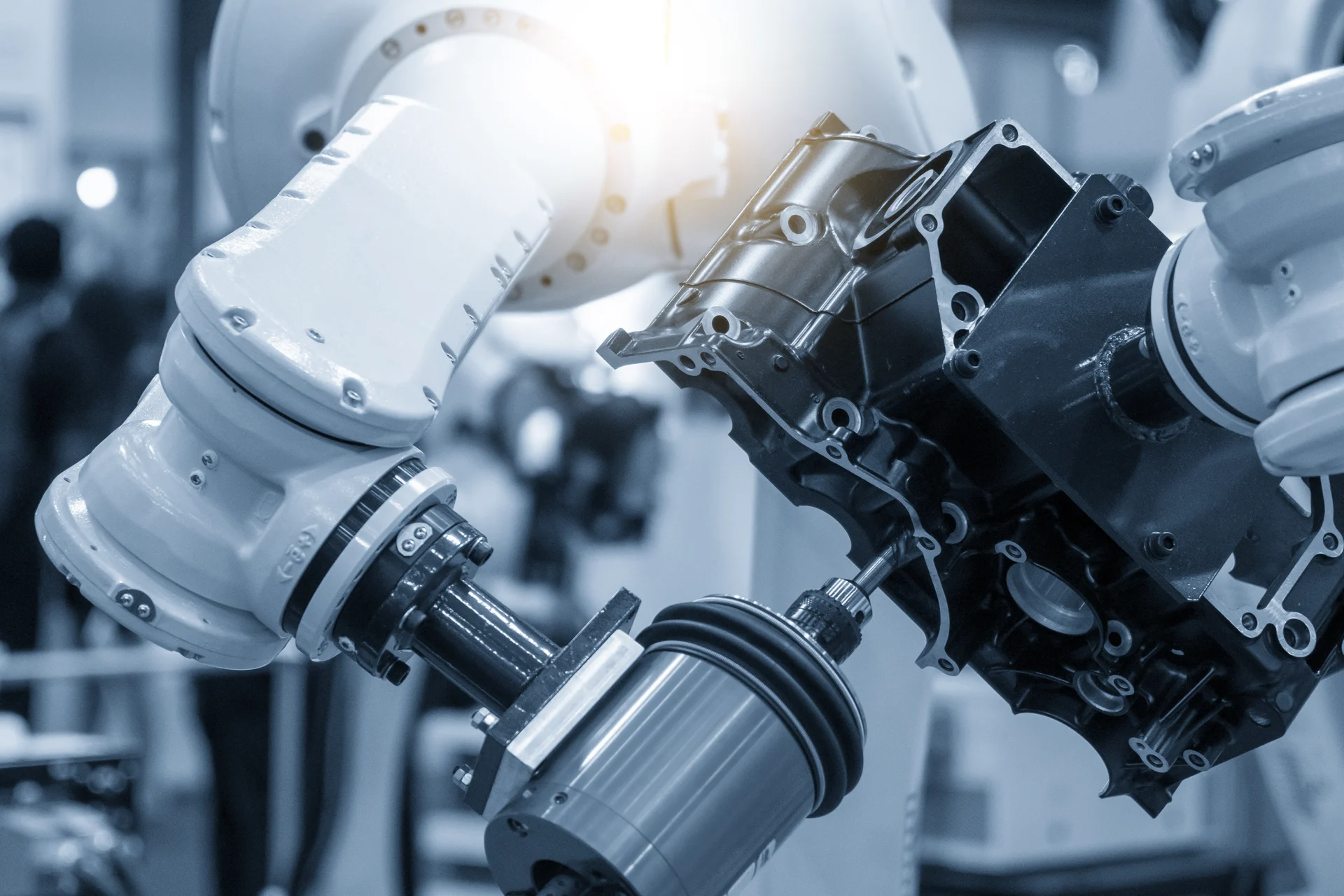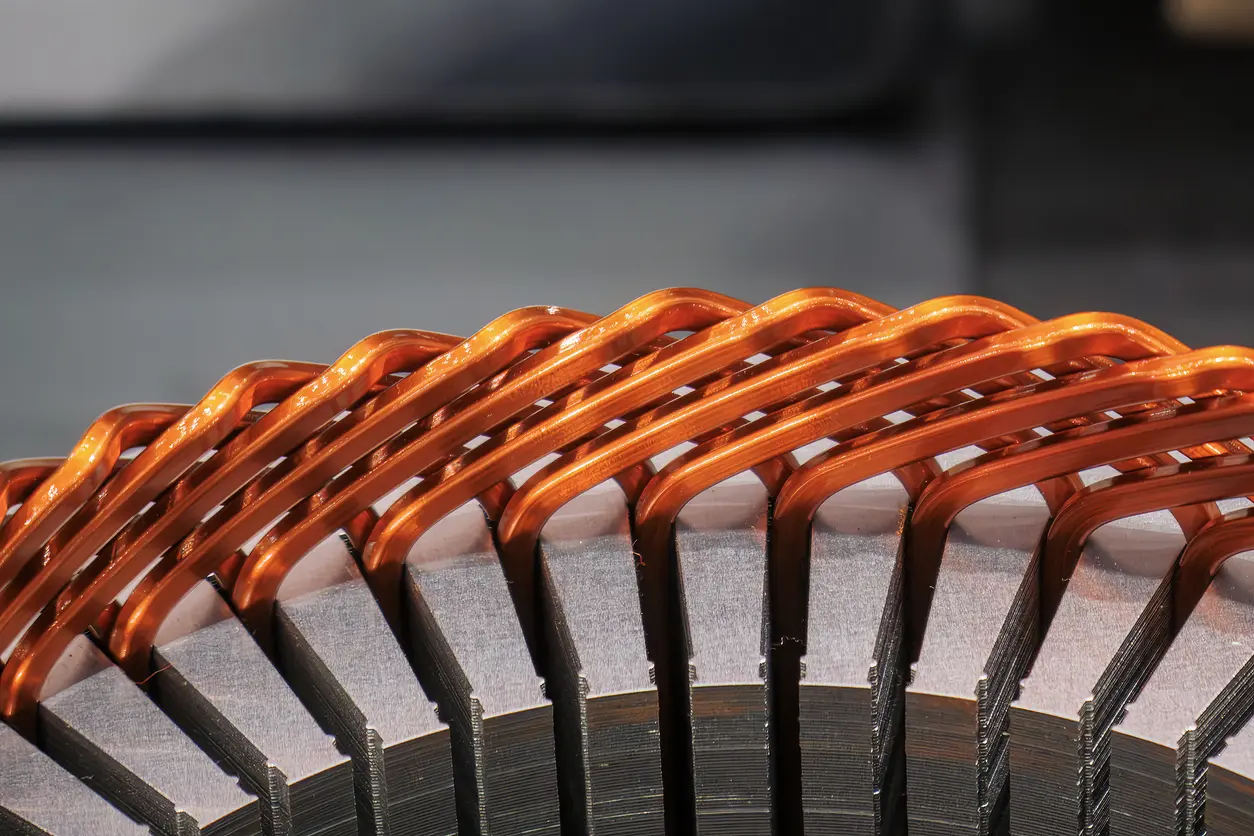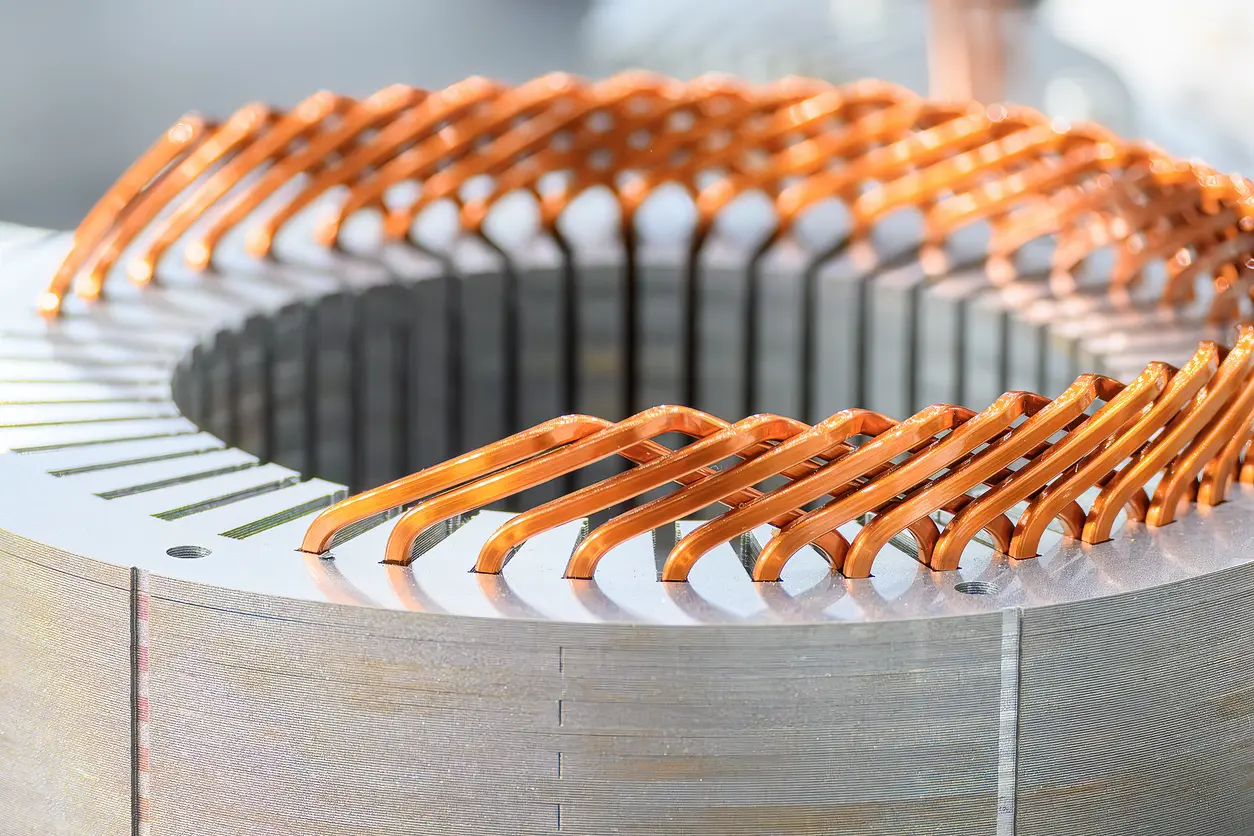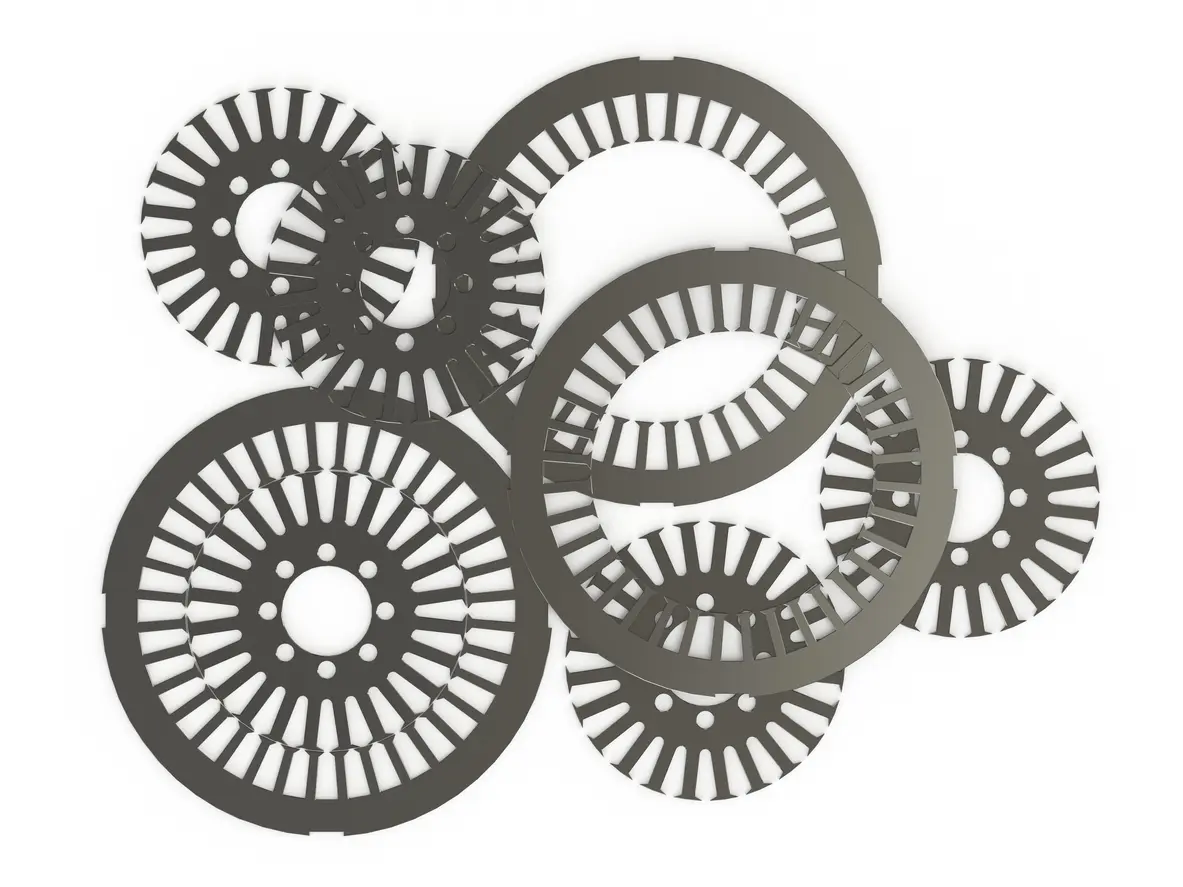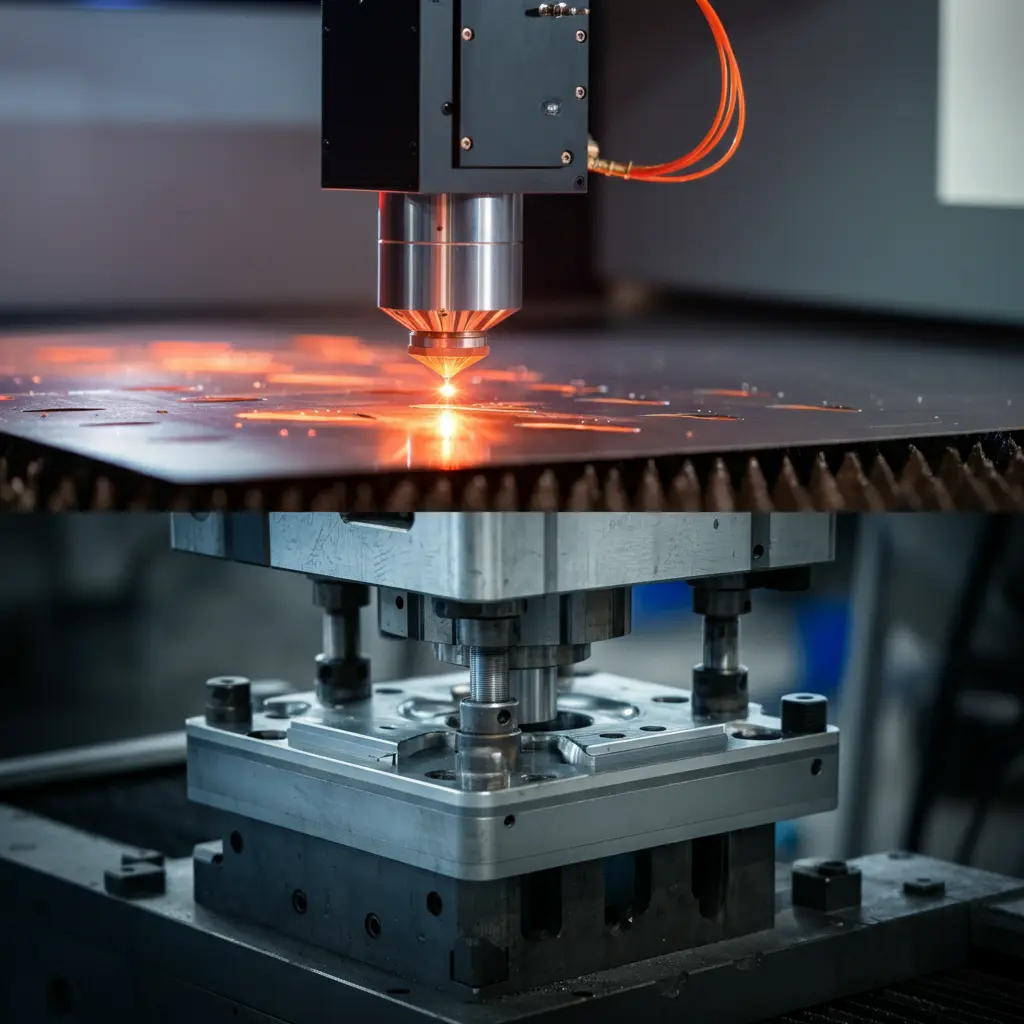1. Introduction to Frameless Torque Motor
1.1 Definition and Working Principle
a. Definition
A frameless torque motor is an electric motor core component without the traditional housing or mounting frame, directly integrating the lamination stack and windings into the application structure. This design significantly reduces overall size and weight by eliminating the external frame found in conventional servo motors, leaving only the essential laminated core and winding structures, supported by the application’s housing or brackets.
b. Working Principle
Frameless torque motors operate by generating torque through magnetic interaction between the stator laminations and rotor magnets. When three-phase alternating current is applied to the windings, the stator creates a rotating magnetic field. Permanent magnets or electromagnets on the rotor follow this field, directly coupling torque to the mechanical load, enabling efficient and low-inertia operation.
1.2 Core Features and Advantages
a. High Power Density and Efficiency
By eliminating the casing and auxiliary components like cooling, frameless torque motors achieve higher power density within the same or smaller space. Additionally, optimized magnetic circuits and self-bonding lamination techniques significantly reduce iron losses, enhancing overall efficiency.
b. Design Flexibility and Improved Heat Dissipation
Frameless torque motors integrate directly into equipment housings or shafts, reducing transmission chains and mechanical play. Their exposed core structure also enlarges the heat dissipation area, maintaining lower operating temperatures and prolonging motor lifespan.
1.3 Main Application Areas
Frameless torque motors are widely used in industrial automation, medical devices, drones, and humanoid robots, especially in applications with stringent size, weight, and dynamic response requirements.
2. High-Performance Magnetic Circuit Optimization
2.1 Principles of Magnetic Circuit Design
a. Reducing Magnetic Resistance and Leakage
In frameless torque motors, the magnetic circuit significantly affects iron loss and efficiency. Using silicon steel with high silicon content minimizes hysteresis and eddy-current losses. Precision stamping ensures excellent lamination quality, and strategically adjusted air gaps effectively reduce magnetic resistance and leakage, improving overall performance.
b. Optimal Slot and Tooth Geometry
The shape and size of slots and teeth affect magnetic flux distribution and torque ripple. Parametric design approaches adjust slot widths, tooth radii, and slot depths to achieve optimal magnetic flux density distribution and minimize cogging torque, balancing high torque, low noise, and smooth operation.
2.2 Simulation and Experimental Validation
a. Finite Element Analysis (FEA)
FEA is essential for optimizing high-performance magnetic circuits. Software capable of magnetic-structural coupling and multi-physics analyses simulates magnetic flux distribution, thermal fields, and mechanical stresses. Accurate boundary conditions and mesh density ensure reliable simulation results closely matching real-world performance.
b. Simulation vs. Experimental Results
After simulation, experimental verification through test rigs or prototype evaluations measures torque curves, efficiency, and temperature rise. Differences exceeding tolerance prompt iterative refinements, ensuring frameless torque motors achieve optimal efficiency and reliability.
3. Advanced Self-Bonding Lamination Technology
3.1 Principles and Advantages
a. Process Overview
Self-bonding lamination uses integrated adhesive layers on lamination sheets, activated under heat and pressure to form cohesive stacks without external adhesives or mechanical riveting or welding. The process involves preheating, alignment, pressure curing, and cooling.
b. Increased Stack Density and Reduced Losses
Improved stack density is crucial for frameless torque motor performance. Self-bonding lamination technology provides exceptional tensile shear strength of 14-18 N/mm², while maintaining excellent electrical insulation properties. The coating thickness typically ranges from 0.15mm to 0.35mm for automated processes, which is optimized for both insulation and space efficiency. This technology enhances stacking factor, lowers magnetic resistance, and reduces iron losses.
3.2 Practical Applications
a. Frameless Motor Lamination Implementation
In partnerships with advanced automation and robotics companies, frameless torque motors using self-bonding lamination have demonstrated measurable improvements. Industry data shows approximately 5% increase in torque output and 5% improvement in efficiency compared to traditional bonding methods. These gains allow for more compact motor module designs and reduced inertia, particularly beneficial in dynamic applications.
b. Cost and Performance Benefits
Analysis shows self-bonding technology can reduce processing steps and cycle times compared to traditional methods. The elimination of separate adhesive application and reduced curing times contribute to improved production efficiency. Long-term benefits include enhanced reliability due to the uniform bonding across the entire lamination surface, reducing the risk of delamination during continuous operation.
4. Modular Assembly and Customization
4.1 Advantages of Modular Assembly
a. Rapid Assembly, Maintenance, and Upgrades
Modular assembly separates the core, windings, and mechanical interfaces into independent units with standardized connectors and alignment features, facilitating quick plug-and-play assembly, streamlined maintenance, and easy upgrades without dismantling the entire system.
b. Expandability and Cross-Platform Compatibility
Standardized mechanical and electrical interfaces enable frameless torque motors to adapt quickly across diverse platforms like robotic joints and rotary tables. Manufacturers can flexibly scale modules or swap core stacks to meet varying power needs, reducing redundant R&D and boosting economic efficiency.
4.2 Customization Requirements
a. Project Analysis and Parameter Selection
Thorough analysis of customer-specific motion profiles, torque ranges, space constraints, and environmental conditions helps precisely select shaft diameter, air gaps, winding turns, and magnet materials, ensuring tailored motor solutions meet performance and reliability standards.
b. Case Studies: Industrial Automation vs. Drones
• Industrial Automation: A logistics sorting system employing customized frameless torque motors with modular designs quickly adapts to various load conditions while maintaining stable operating temperatures for continuous operation. • Drone Applications: An agricultural spraying drone used lightweight frameless torque motor modules, shortening transmission paths and lowering the center of gravity, significantly enhancing flight duration and control precision.
5. Smart Manufacturing and Quality Monitoring
5.1 Digital Manufacturing Processes
a. IoT and Industry 4.0 Integration
Integrating IoT with Industry 4.0 platforms in frameless torque motor production enables real-time monitoring of stacking pressures, temperatures, and vibrations. MES and ERP integration ensures production transparency, facilitates rapid anomaly detection, and optimizes capacity planning.
b. Real-Time Data Collection and Analysis
Using edge computing and cloud platforms, critical process parameters like lamination pressures, iron loss measurements, and winding impedance are instantly analyzed. Big data dashboards enable immediate adjustments, maintaining high yield and minimizing defects.
5.2 Quality Inspection Technologies
a. Non-Destructive Testing (NDT)
NDT methods like ultrasonic, eddy current, and X-ray inspections rapidly detect inter-layer voids, cracks, or inclusions, preventing defects and complying with ISO 9001 and IATF 16949 standards.
b. AI Defect Recognition and Predictive Maintenance
Combining machine vision with deep learning algorithms enables instant defect identification, such as misaligned cores or winding issues, and predictive maintenance models anticipate maintenance needs, enhancing reliability and productivity.
6. ESG and Green Manufacturing Trends
6.1 Eco-Friendly Materials and Circular Economy
a. Recyclable Lamination Materials
High recyclability silicon steel and environmentally friendly coating materials are increasingly adopted in the industry. These materials promote resource recycling and reduce emissions compared to traditional coating processes.
b. Waste Minimization Strategies
Precision stamping and intelligent layout minimize silicon steel waste. Frameless assembly reduces adhesive usage, creating opportunities for more sustainable manufacturing processes and minimizing waste generation.
6.2 Energy Efficiency and Carbon Management
a. Energy Monitoring and Optimization
Energy monitoring systems help identify and optimize power-intensive processes, contributing to overall energy reduction in manufacturing operations.
b. Carbon Footprint Reduction
Frameless torque motor manufacturers are increasingly implementing carbon reporting practices, exploring renewable energy options, and optimizing logistics. These efforts align with global sustainability targets while meeting market demands for environmentally responsible manufacturing practices.

